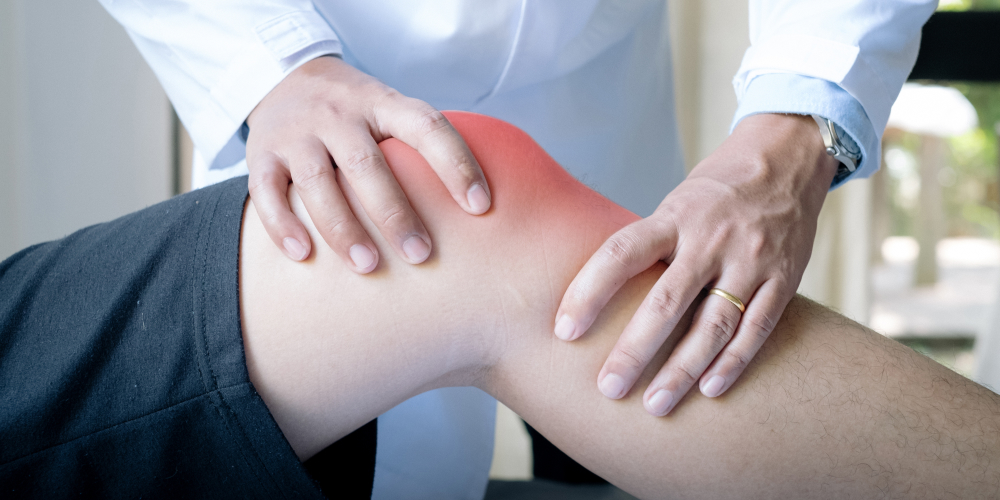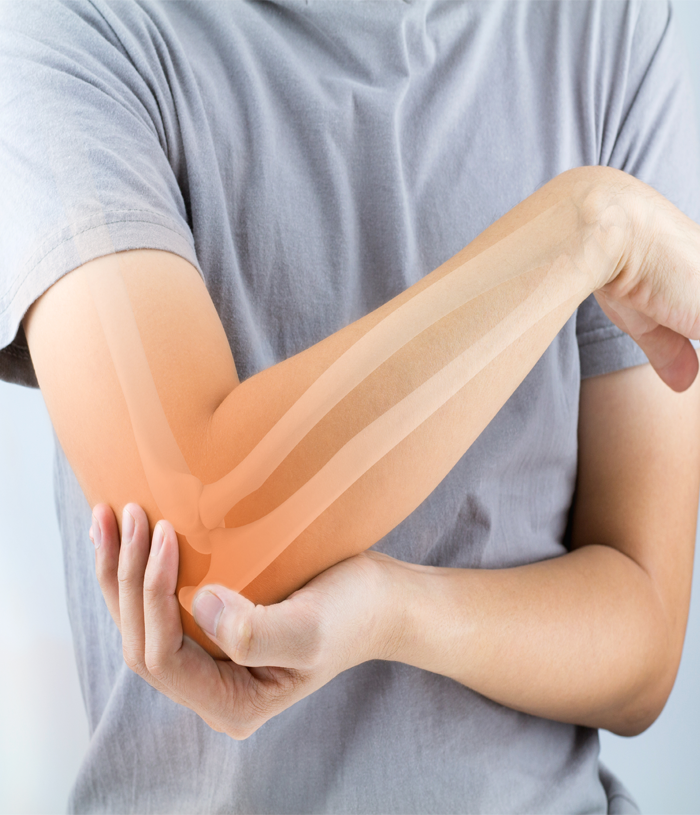
Picture this: You are living life to its fullest when a bone or joint injury brings it all to a halt. But here is the twist – you hold the reins to prevent such a scenario. Every step you take and every move you make can build up your defence against common orthopaedic injuries. It is about turning wisdom into action, minimising the chance of harm, and improving your well-being. Remember that a strong frame not only carries a sound body but also enriches your existence.
Minimising & Preventing Common Orthopaedic Injuries
Orthopaedic woes can throw a wrench in your daily grind, yet they are avoidable with savvy moves.
Maintaining a trim figure is a major move in dodging bone and joint injuries. Extra body weight can increase the odds of nasty conditions like arthritis and worn-out joints. Stay at a healthy weight, and you ease the load on these parts, which is a prime move in staying injury-free.
Maintaining a Healthy Weight to Prevent orthopaedicInjuries
Excess weight is not just about looks. It hits your orthopaedic health hard. The extra burden adds a significant load on your weight-bearing joints, like knees, hips, and ankles, increasing the risk of harm. Each extra pound you tote means four pounds of added pressure on your knees. This speeds up the wear and tear on your joints, possibly leading to arthritis and joint disease.
To manage your weight and lessen the load on your joints, zero in on two key parts:
- Maintain a nutritious diet.
- Stay active regularly.
By honing in on these weight control elements, you prepare the stage for an active life, free from the chains of orthopaedic injuries.
Regular Exercise for Orthopaedic Strength and Flexibility
To shield your orthopaedic health, staying active is critical. A well-planned exercise regime should cover a spread of activities, each serving unique perks for bone and joint health. It should include:
- Strength training, like lifting weights or bodyweight moves like push-ups or squats, to boost muscles and aid bone health.
- Flexibility moves, like stretches, to up your range of motion and posture and ease blood flow.
- Gentle options like swimming, biking, yoga, and resistance band work, which are easier on the joints and minimise injury risk.
Mixing up your workout keeps things fun, promotes joint steadiness, and lowers the chance of harm. Remember to start with the right warm-up moves to prep your body for these activities.

Effective Warm-Up and Cool-Down Techniques for Injury Prevention
Proper warm-up and cool-down routines are vital for a risk-free and effective exercise plan. Warming up gets your body set for the physical demands of working out, gradually increasing your heart rate and circulation. This process makes the joints looser and boosts blood to the muscles, cutting down on strains and injuries.
Kick off with dynamic stretches, like leg swings and arm circles, to ramp up your body heat and flexibility. You might also mix in gentle moves like walking lunges or easy jogging to prep your muscles for tougher action. It is about getting the body ready for what's to come.
Cooling down is just as important. After your main workout, slowly dialling down the intensity lets your heart rate return to normal smoothly. Doing static stretches after working out helps stretch the muscles you have just used, aiding in recovery and improving overall flexibility. This step is key in avoiding muscle tightness and soreness, which can lead to harm if ignored.
While at it, consider how your tools can help your overall orthopaedic health.
Selecting Proper Equipment and Footwear for Orthopaedic Health
In dodging orthopaedic injuries, choosing the right tools and shoes is critical. The gear you pick has a big effect on your joint health. It is key to choose shoes that fit well and offer support. Strong arch support is vital as it helps spread weight evenly, easing the burden on your knees, hips, and back. Inserts or custom supports may help those with special foot needs or who need extra support.
The downsides of the wrong shoes are serious. Shoes that lack support or are not designed for certain activities can cause various problems, from blisters and heel pain to severe conditions like plantar fasciitis and stress fractures. These issues not only bring discomfort but can also keep you from your day-to-day life or favourite sports.
By paying close attention to the gear and shoes you use during physical action, you are taking an active step towards keeping your orthopaedic health. So make sure your choices show your care for your joints, letting you keep up an active life without interruptions.
Benefits of Low-Impact Exercises for Orthopaedic Health
Adding low-impact moves to your plan, like swimming, is a soft yet effective way to maintain your orthopaedic health. By doing activities that do not overload your joints, you are taking an active step towards keeping muscle strength and joint flexibility, which are key for avoiding injuries.
Knowing the right way to do these moves is as important as the exercise to ensure you truly protect your body. Getting advice on the proper way to do things is smart to get the most out of your low-impact exercise plan.
Practicing Good Form to Prevent Orthopaedic Injuries
When you are active, using the right technique is key in dodging orthopaedic injuries that can mess with your life and long-term health. No matter the exercise, the right way to do it is crucial.
- In weight-lifting, keeping a straight back and using your legs rather than your back to lift can keep you from back strain and slipped discs.
- In running, the right foot placement and stride can save your knees and ankles from extra stress.
The small tweaks in how you do these moves can make a big difference in staying injury-free.
If you are unsure how to do something, do not hesitate to ask for expert help. A trained coach or physiotherapist can offer key insights into how to do different moves. They can walk you through the steps, ensuring you are doing the right moves and keeping your body safe from harm.
By always using the right technique, you will not just do better but also reduce injury risk. Mixing up your workouts through cross-training can also lower the chance of overuse injuries by letting different muscle groups work and rest, making for a well-rounded fitness plan.
Cross Training & Its Impact on Orthopaedic Injury Prevention
Cross training means doing a variety of exercises and activities rather than just one. The main perk of cross-training is that it helps avoid repetitive stress injuries. These injuries come when the same muscles and joints get used too much for one activity, causing overuse and strain. By changing up your workouts, you give some muscle groups a break while others work, which helps maintain overall musculoskeletal balance and minimises injury risk.
To add cross-training to your plan, pick activities that complement each other and work different muscle groups. For example, if you run, you could add:
- Biking or swimming to your plan to ease the impact on your joints while still upping your heart health.
- Strength training with resistance bands or free weights to boost muscle strength and joint stability, which are key for backing up your main sport or activity.
- Yoga and Pilates to improve flexibility and core strength, which can also help protect against injuries.
While working out, you should always listen to your body and heed any pain it might signal. If something hurts, it is smart to rest that part. Remember, cross-training aims to improve your fitness while keeping your body safe from harm.
Nutrition and Hydration Strategies for Joint Health
To back up your joint health through what you eat and drink, think about adding the following to your daily routine:
- Drink plenty of water to keep the cartilage in your joints smooth and bouncy.
- Eat foods rich in omega 3 fatty acids, nuts and seeds, green veggies, colorful fruits, olive oil, lentils and beans, garlic and root veggies, and whole grains to help lessen swelling, fix tissues, and keep bones strong
By weaving these food strategies into your life, along with regular doctor visits, you can really help avoid orthopaedic injuries and keep your musculoskeletal health solid.
Importance of Health Check Ups in Orthopaedic Injury Prevention
Regular doctor visits are a key part of avoiding orthopaedic injuries. By setting up routine check ins, you allow for early spotting of possible orthopaedic problems, which can be much easier to handle and treat before they get worse and turn into long term issues. Finding problems early can simplify how to treat them and lead to better long term results for your musculoskeletal health.
Connecting with community resources and keeping a balanced view of physical health can also boost your efforts to avoid orthopaedic injuries, making sure you are giving your body the right support.
Also Read : Exploring Orthopaedic Trauma- Definition, Causes, and Types
Lifestyle and Community Support in Orthopaedic Injury Prevention
Your local community might have programs and places meant to boost physical health. Joining group workouts, going to workshops on good nutrition and body mechanics, or signing up with a local sports club can give you the know how and push to keep your joints and muscles healthy. Also, a community that puts health first can offer support networks for those getting over injuries or trying to live healthy. This can range from peer support groups to community health plans, giving you a space to share experiences and tips. As you think about how community plays a part in your journey to keep your bones and joints healthy, remember that your own care and proactive steps are just as key in protecting your well being.
Empowering Your Orthopaedic Wellness Journey
As you move forward in avoiding orthopaedic injuries, remember that the choices you make now shape your future health. Getting into each tip makes sure your bones and joints get the love they need. Sticking to regular check ups and tailored medical care is key.
Reach out to the best orthopaedic surgeon in Chennai to back up your journey with top notch, patient focused treatments. Book your visit today – your health should come first!
